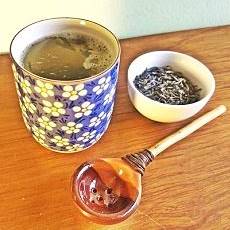Observational Studies
In an observational study, a group of people living their lives normally, in their regular settings are monitored on a regular basis by researchers. They don't test medical devices or drugs, they observe a people and record information about them and measure data, but there is no attempt to modify the outcome. These studies may help identify fields to be studied in detailed clinical trials (1).
Observational studies merely observe a situation and report it. There are different types of observational studies.
Types of Observational Studies
Case reports and case series
A case report is an atypical case that appears in clinical practice, something unusual, out of the norm. This unique case is described as a case report and presented tho the medical community.
Case series is when a group of patients present the same unusual condition, each of them a case report, indicating that there may be some new medical condition that should be explored.
Ecologic study
It is a study that describes some features in a population group. For instance measuring the incidence of a type of cancer and the intake of fat per capita. This could show there is a positive link (correlation) between a high dietary fat intake and an increase in that type of cancer. Another example could study if hospital admissions for lung-related ailments in a given city increase on days when air pollution levels are higher. But that is all it can do, find a correlation.
Case-control study
These studies compare two groups one of them (cases) could be subjects with a disease or condition, the other subects don't have the disease (controls).
The researcher then looks at all the historical factors reported by the subjects trying to find out if some kind of exposure is more common among cases than in controls. If it it is, the study may conclude that the exposure is linked to the condition being studied. It may be biased by the selective recall of the subjects if it is based on lifestyle reporting.
An example is the link between HIV and Kaposi's sarcoma, a rare type of cancer. Comparing a control group without the cancer and a group with the cancer the researcher would notice that those with Kaposi's sarcoma are more likely to have HIV and then conclude that HIV is a risk factor for developing that illness.
Cohort study
These studies compare two groups just like Case-control studies, but cohort studies are more expensive and time-consuming. There are two types of cohort studies:
- Prospective cohort studies where it follows studies over a period of time (often years) from the first exposure till the outcome. This is cosly and takes time. Example: female nurses who smoke and those who don't and follow them over the years to study the prevalence of lung cancer.
- Retrospective cohort studies where a certain population (cohort) with and without the exposure to a certain condition (smoking) is assessed on the outcome (developing lung cancer) based on past records.
Examples of observational studies:
- Does a vegetarian diet improve health?
- Does walking improve health?
- Fat consumption and heart health
- Cancer prevalence and exposure to certain chemicals
The participants enroll and provide regular data through questionnaires, reporting eating habits, lifestyle information, weight, blood pressure, etc.
Shortcomings of Observational Studies
These studies are not perfect, there are factors called "confounders" that affect the outcome of what is observed. As an example take alcohol and high blood pressure. This was noticed in observational studies: those with a higher intake of alcohol have high blood pressure. But, is it caused by alcohol? or are there other confounding factors?
Maybe people who drink alcohol also have a poor lifestyle, and smoke more than teetotallers, their diet is probably not healthy either, they may also tend to be more sedentary. So, are these confounding factors (smoking, poor diet, lack of physical activities) and not alcohol the cause of high blood pressure? The cause-effect link: alcohol causes high blood pressure may not be true.
Another confounder is Reverse Casuality where the supposed risk factor is caused by the assumed effect. For example, ill people tend to sit down more often to rest and recover from fatigue than they would if they were healthy. An observational study that was investigating the association between sedentary inactivity and adverse outcomes without excluding those who are known to have bad health would conclude that sitting time is linked to illness, while in this case it is the other way round.
To overcome these factors that can lead to biased results, Mendelian Randomized studies were created.
Mendelian Randomized studies
Mendelian randomisation uses genetic variation as a natural experiment to investigate the causal relations between potentially modifiable risk factors and health outcomes in observational data.
It can be interpreted as a randomized study: imagine two groups, one has he risk allele, the other is the control group, with another allele. We assume that confounders are equal between both groups. Then we measure the outcome and compare both groups.
Fon instance, people with a variant of the ALDH2 gene (let's call it "Mutated"), are more likely to drink more alcohol than those with other alleles of the ALDH2 gene (let's call them "Control"). We want to study the effect of parent's alcohol intake on the weight of their babies' birth weight. We can objectively measure the alleles, and also the weight of babies of the Mutated group and compare it with the weight of the babies of the Control group. Assuming that confouders affect all parents equally, this will give us a good idea of cause-effect between alcohol and birth weight. It will be far better than asking the parents to report how much they drink, as would be the case in a regular observational study (where there is the risk of under-reporting actual consumption, known as "reporting bias").
Reverse causation is not possible in this experiment (babies birth weight can't influence how much alcohol their parents drank before they were born).
Clinical Trials
Also called therapeutic trials, it compares two or more groups of subjects with a condition or disease that are placed in different groups that receive different treatments. And the outcome is recorded.
One of the first studies of this type was conducted by James Lind in 1747 on a group of sailors to study the impact of diet on scurvy. They were divided into six different groups, each one eating the same food but adding a different supplement to it. The group receiving 2 oranges and one lemon showed the best outcome compared to the others (who received, cider, vinegar, barley water, etc.) This proved a casual relationship between a successful treatment for scurvy and citrics.
They are used to validate if a surgical or medical therapy, a drug, diet, medical device is safe and effective in treating a condition. It also answers questions like: Is it better than an existing therapy? Is it less harmful? Does it improve life quality? Does it diagnose a disease earlier, before symptoms appear?
There are different types of trials, as the idea is to provide unbiased and objective data.
Randomized trials
As its name indicates, people taking part in a study are assigned into one of the subject groups at random. A process known as "randomization". This is done using a computer program to ensure it is unbiased and really random.
It avoids the unconscious bias by which a doctor may place patients who are more ill than others in one of the groups, causing it to respond badly to the treatment and appear as ineffective, but actually the poor outcome is due to its subjects being in worse conditions than those of the other groups.
Randomization ensures that if there are differences in the outcomes of different groups it is caused by the treatment and not by differences in the participants (2).
Control Group
This is the group that receives the standard treatment, just as they would if they were not part of the trial.
Placebo
It is possible that there is no standard treatment for those in the control group or that they have already had all the currently available treatments. In this case they will be assigned a "dummy" treatment or placebo
Placebos look, feel, taste and smell exactly like the genuine treatment. They make take the form of pills, injections, or drinks. The idea behind a placebo is that a real treatment should be more effective than a dummy drug (saline solution, starch).
For ethical reasons, researchers only use a placebo if no standard treatment is available. It wouldn't be acceptable to give a placebo to patients who really need treatment for their condition.
Blind trials
To add even more certainty and eliminate bias, blind trials are employed, the idea is that the participants and or the researchers don't know who is receiving the standard treatment or placebo and who is receiving the alternate ones under trial.
- Blind trial. Single blind trials are those where the subjects or patients don't know what treatment they are getting. Their medicines look identical so they can't say what they are having.
- Double blind trial. Neither the patients or the researchers know who is getting what. Each patient is given a code number and randomly assigned to a group. The treatment is sent to the doctor to administer it to the patients with their code number printed on it; it could be placebo, standard treatment or the new one. The doctor does not know what he is giving the patient, who does not know in which group he or she is.
At the end of the trial they learn which group they were in. In an emergency the researcher could learn (via code number) which group the patient is in and check if it wasn't caused by the trial.
Placebo Effect
The placebo effect is an intriguing phenomenon by which the dummy treatment or placebo causes an improvement in the patient's conditions.
Due to the inert nature of the sham medicine in the placebo, this improvement can only be caused by the patient's positive perception about the treatment and its expected outcome.
The brain somehow works together with the body reducing the perception of pain, making the subject feel better, improving moods, and self awareness. Somehow the brain is telling the body to get better.
Placebo effects also appear with the regular treatments, the baseline one that is used normally and is being compared to the novel therapy.
As can be expected, improved conditions due to a placebo effect influence the outcome of clinical trials.
The placebo effect doesn't cure the disease it only makes the subject feel better.



